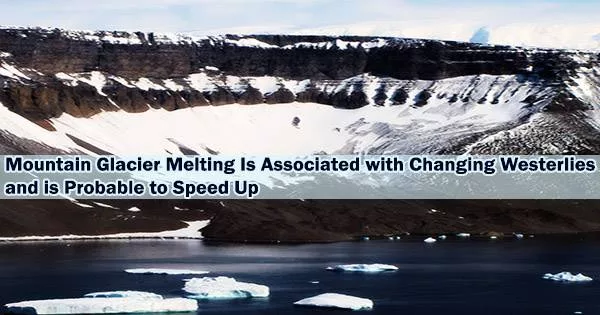According to a UMaine study, the combination of global atmospheric warming and westerly winds shifting toward the poles would probably hasten the retreat of mountain glaciers in both hemispheres.
Mountain glaciers freeze, gaining mass in a cooling environment, and melt, losing mass in a warming one. It is less clear how much local, regional, and even hemispheric climate variations are reflected in mountain glacier fluctuations, which makes it more challenging for scientists to interpret historical climate dynamics and generate future predictions using glacial data.
The University of Maine team compared the global temperature and wind changes with glacier snowline elevations (also known as “equilibrium-line altitudes”) in the Southern Alps of New Zealand and in the European Alps observed over the course of nearly four decades to evaluate how atmospheric conditions are reflected in the mass fluctuations of mid-latitude glaciers on opposite sides of the Earth.
The height of the snowline in the atmosphere, below which ice melts, is a function of the temperature of the atmosphere, which in turn determines the extent of the glaciers.
The information demonstrated that for the two mountain systems under study, even on hemispheric scales, variations in glacial snowlines reflected temperature changes over substantial areas of the atmosphere.
This study really shows how intertwined Earth’s climate system is. At first subtle shifts in the state of the climate system can create waves throughout the system that have far-reaching consequences.
Alexander Audet
Furthermore, it was discovered that the latitudes of westerly wind belts play a significant role in controlling the ratio of cold to warm air masses that affect glacier melting and freezing.
“This study really shows how intertwined Earth’s climate system is. At first subtle shifts in the state of the climate system can create waves throughout the system that have far-reaching consequences,” says Alexander Audet, principal author of the study, who completed the research as a master’s student at the University of Maine. He is now pursuing a Ph.D. at the University of Nevada, Reno.
The findings indicate that under conditions of global warming, the westerly wind belts’ poleward constriction may hasten warmth and glacier melting in the mid-latitudes of both hemispheres.
“These results highlight the sensitivity of Earth’s mountain glaciers to broad-scale atmospheric dynamics. They are incredibly sensitive, physical thermometers, monitoring atmospheric conditions from the sea surface to the top of the troposphere. Reconstructions of past glacier change from glacial landforms may therefore help to provide quantitative insights into how large portions of the atmosphere behaved during past episodes of abrupt climate change, and in turn may offer clues into the climate dynamics of a warming world,” says Aaron Putnam, co-author of the study and associate professor at the UMaine School of Earth and Climate Sciences.
George Denton, UMaine professor at the School of Earth and Climate Sciences and the Climate Change Institute, also co-authored the report.
Other co-authors of the study included Joellen Russell of the University of Arizona; Andrew Lorrey, who received his master’s at UMaine and is now principal scientist of climate and environmental applications at the National Institute of Water and Atmospheric Research (NIWA) in New Zealand; Andrew Mackintosh of Monash University, Australia; and Brian Anderson at the Victoria University of Wellington, New Zealand.





